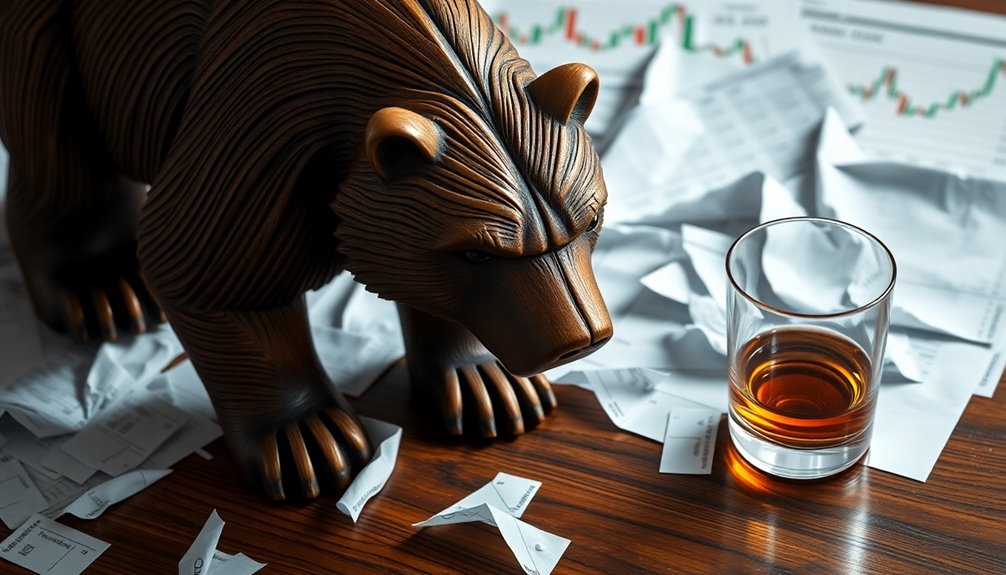When you think of a bear market, what images come to mind? It's easy to picture falling stock prices and a gloomy financial outlook. But the name itself holds a deeper meaning. Its origins trace back to traders and their practices, reflecting not just market trends but also human behavior. Understanding this term can change how you view market movements. So, what exactly sparked this intriguing metaphor?

When you think about the term "bear market," it might surprise you to learn that its origins are steeped in history and metaphor. A bear market is defined as a prolonged period during which stock prices decline by more than 20% from their peak. These downturns can last for several months or even years, impacting investor sentiment and market activity profoundly. They often arise from various triggers like economic downturns, geopolitical tensions, or just plain market corrections, leaving many investors feeling cautious and apprehensive.
The term "bear" itself has an interesting backstory. It may have originated from bearskin traders who sold their skins before actually acquiring them, essentially betting on future price drops. This speculative practice aligns well with the forward-looking nature of bear markets. Furthermore, the way bears swipe downward when attacking serves as a fitting metaphor for a market in decline. Interestingly, the term made its financial debut as early as 1709, thanks to Richard Steele, and gained traction throughout the 18th century, particularly in London's bustling financial district.
During bear markets, market sentiment typically turns negative. You might notice a drop in consumer spending and overall economic activity as investors pull back, opting for more cautious strategies. Trading volumes often decrease, too, as people hesitate to engage in the market. You may even hear discussions about short selling, a practice where investors bet on price declines, which tends to rise in popularity during these periods. Bear markets often accompany negative investor sentiment, which highlights the emotional response that shapes trading decisions during these times.
While bear markets can be linked to economic recessions, not every bear market leads to one, yet the correlation is noteworthy.
Despite the challenges a bear market presents, there are opportunities hidden within the struggles. Savvy investors often find undervalued stocks, creating potential for future gains when the market eventually recovers. Historical examples, like the 1929 stock market crash that led to the Great Depression, serve as reminders of the severity bear markets can reach. These downturns also have global implications, affecting multiple sectors and regions.
Ultimately, while bear markets can be daunting, they're a natural part of market cycles. Understanding the origins and characteristics of a bear market equips you to navigate the complexities of investing. With the right strategies, you can turn potential pitfalls into opportunities, waiting for the inevitable recovery that often leads to new bull markets.









